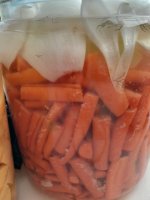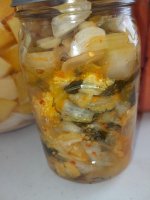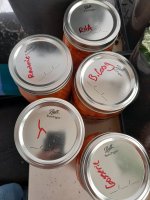Douglas.Curtis
Autistic Diplomat in Training
Fermentation is natures preservative, and an amazing flavor buffet along the way. 
Lacto-Fermentation is great for all kinds of fruits and vegetables, so what are you fermenting?
Short List:
Spaghetti Squash and Garlic <--- crazy tasty!
LOTS of Carrot Sticks
Krautchi w/Habanero
and more carrot sticks!
I picked up some of the most beneficial pro-biotic lacto bacillus strains, then made 'yogurt' type cultures with them. You can use these as starters for all kinds of ferments, to ensure maximum beneficial (for animals) probiotic content.
Lacto-Fermentation is great for all kinds of fruits and vegetables, so what are you fermenting?
Short List:
Spaghetti Squash and Garlic <--- crazy tasty!
LOTS of Carrot Sticks
Krautchi w/Habanero
and more carrot sticks!
I picked up some of the most beneficial pro-biotic lacto bacillus strains, then made 'yogurt' type cultures with them. You can use these as starters for all kinds of ferments, to ensure maximum beneficial (for animals) probiotic content.







